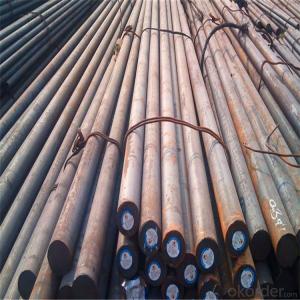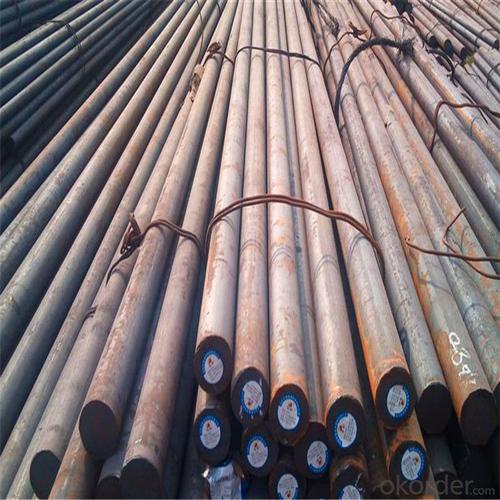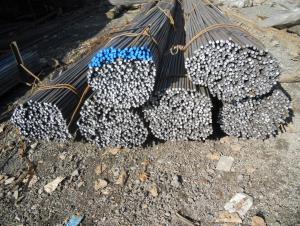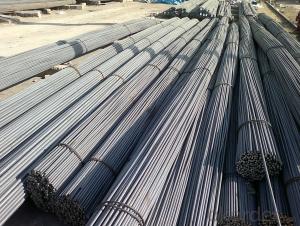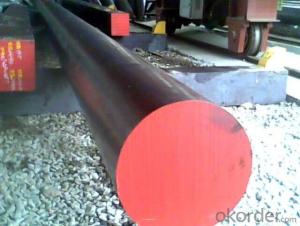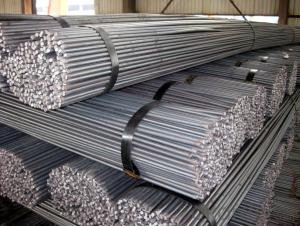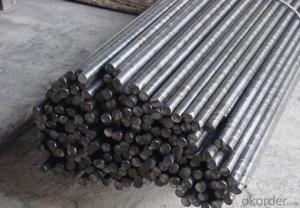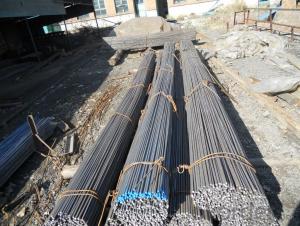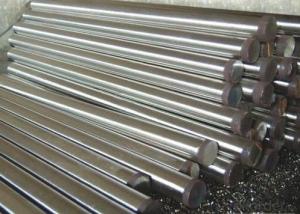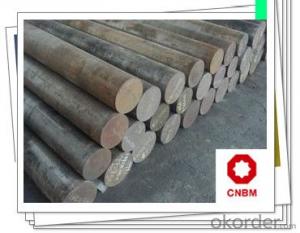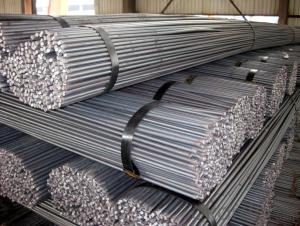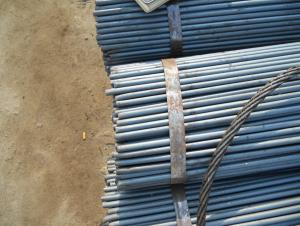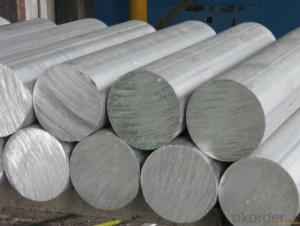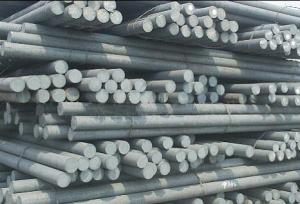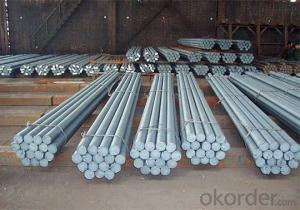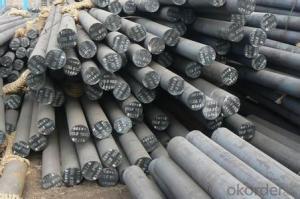42CrMo4 qt Q+T 42CrMo4 for Drill Pipe
- Loading Port:
- Tianjin
- Payment Terms:
- TT OR LC
- Min Order Qty:
- 100 m.t.
- Supply Capability:
- 50000 m.t./month
OKorder Service Pledge
OKorder Financial Service
You Might Also Like
Specification
42CrMo4 qt Q+T 42CrMo4 for Drill Pipe
Product Description of 42CrMo4 qt Q+T 42CrMo4 for Drill Pipe
1. Steel grade: ASTM4140, SCM440, 42CrMo, DIN1.7225
2. Length: 6M-12M
3. Diameter: 16mm-300mm
4. Product range: round bar, flat bar, square bar
5. Technique: Hot rolled, forged, cold drawn
Specification of 42CrMo4 qt Q+T 42CrMo4 for Drill Pipe
Material | 42CrMo4 | Round bar | Dia(mm) | 16-300mm |
Process | EAF + LF + VD + Forged + Heat Treatment (optional) | Length (mm) | Max 12m | |
Heat treatment | Normalized / Annealed / Quenched / tempered | Flat bar | Thickness(mm) | 8-500mm |
Delivery condition | Hot forged +Rough machined (black surface after Q/T)+ Turned (optional) | Width(mm) | 70-200mm | |
Test | Ultrasonic test according to SEP 1921-84 D/d | Length (mm) | Max 12m |
Chemical Composition of 42CrMo4 qt Q+T 42CrMo4 for Drill Pipe
C | Si | Mn | Cr | Mo | P | S |
0.38~0.43 | 0.15~0.35 | 0.75~1.00 | 0.8~1.1 | 0.15~0.25 | ≤0.035 | <0.04< td=""> |
Photo Show of 42CrMo4 qt Q+T 42CrMo4 for Drill Pipe
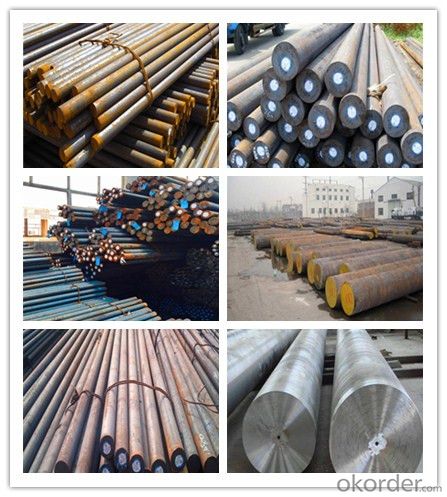
Packing and Delivery:
Packing in bundle package, or as customer's requirements.
Delivery Detail: 45 days after receiving the deposit.
Usage and Applications of 42CrMo4 qt Q+T 42CrMo4 for Drill Pipe
1. Steel round bar is used in a large number of architectural and engineering structures. Or it can be used in construction of plants for the production of steel house frames, high-voltage transmission towers, bridges, vehicles, boilers, containers, ships, etc.
2. And we can use this kind of product on the performance of the mechanical parts if the demand is not very high.
3. Some special material steel round bar can be used for main shaft of steamer, hummer shank, with big section and supper force.
Company Information
CNBM International Corporation is the most important trading platform of CNBM group.
Whith its advantages, CNBM International are mainly concentrate on Cement, Glass, Iron and Steel, Ceramics industries and devotes herself for supplying high qulity series of refractories as well as technical consultancies and logistics solutions.

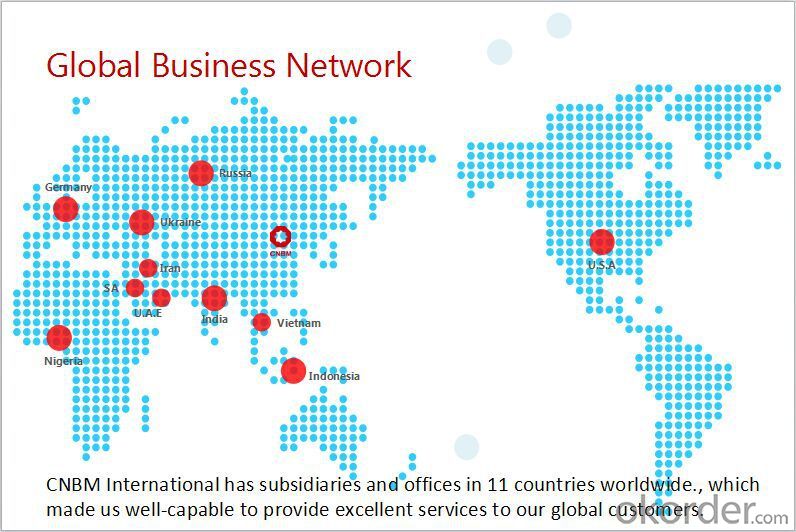
F A Q
1, Your advantages?
professional products inquiry, products knowledge train (for agents), smooth goods delivery, excellent customer solution proposale
2, Test & Certificate?
SGS test is available, customer inspection before shipping is welcome, third party inspection is no problem
3, Factory or Trading Company?
CNBM is a trading company but we have so many protocol factories and CNBM works as a trading department of these factories. Also CNBM is the holding company of many factories.
4, Payment Terms?
30% TT as deposit and 70% before delivery.
Irrevocable L/C at sight.
5, Trading Terms?
EXW, FOB, CIF, FFR, CNF
6, After-sale Service?
CNBM provides the services and support you need for every step of our cooperation. We're the business partner you can trust.
For any problem, please kindly contact us at any your convenient time.
We'll reply you in our first priority within 24 hours.
- Q: Are steel round bars suitable for marine applications?
- Yes, steel round bars are suitable for marine applications. Steel is known for its excellent strength and corrosion resistance, making it an ideal material for use in marine environments where it is exposed to saltwater and other harsh conditions. Steel round bars can be used in various marine applications such as boat building, marine structures, and offshore platforms, providing durability and reliability. Regular maintenance and appropriate coatings can further enhance their longevity and performance in marine environments.
- Q: What are the chemical composition requirements for steel round bars?
- The chemical composition requirements for steel round bars vary depending on the specific grade or type of steel being used. However, in general, steel round bars are typically made from carbon steel, alloy steel, or stainless steel. Carbon steel round bars typically have a chemical composition consisting of iron and carbon, with trace amounts of other elements such as manganese, phosphorus, sulfur, and silicon. The carbon content in carbon steel round bars can range from 0.08% to 2.1%, depending on the desired strength and hardness. These bars are commonly used in construction, manufacturing, and general-purpose applications. Alloy steel round bars contain additional alloying elements such as chromium, nickel, molybdenum, vanadium, and manganese. These elements are added to enhance the mechanical properties of the steel, such as improved strength, hardness, and resistance to wear and corrosion. The specific chemical composition requirements for alloy steel round bars can vary significantly depending on the desired properties and the specific alloy being used. Stainless steel round bars are composed primarily of iron, chromium, and nickel, along with smaller amounts of other elements such as carbon, manganese, and molybdenum. The high chromium content in stainless steel provides excellent corrosion resistance, while the nickel content enhances its strength and ductility. The chemical composition requirements for stainless steel round bars are typically specified by international standards such as ASTM or EN, which outline the minimum and maximum allowable percentages of each element. In summary, the chemical composition requirements for steel round bars depend on the specific grade or type of steel being used, with carbon steel, alloy steel, and stainless steel being the most common types. The composition of these bars is carefully controlled to achieve the desired mechanical properties and performance characteristics for various applications.
- Q: Can steel round bars be used for valve stem applications?
- Steel round bars can indeed be utilized for valve stem applications. Their exceptional strength and durability make them a popular choice in numerous industrial settings. In valve stem applications, steel round bars are frequently employed to offer stability and structural support to the valve stem, thus guaranteeing seamless operation and enduring performance. Moreover, steel round bars can be effortlessly machined and fabricated to meet precise specifications, rendering them an adaptable option for valve stem applications.
- Q: How do you calculate the deflection of a steel round bar?
- To calculate the deflection of a steel round bar, you need to consider various factors such as the bar's length, diameter, and the applied load. The deflection of a bar refers to the amount it bends or flexes under a specific load. The deflection can be determined using the formula for beam deflection, which is derived from Euler-Bernoulli beam theory. The formula is as follows: δ = (F * L^3) / (48 * E * I) Where: - δ represents deflection - F is the applied load - L is the length of the bar - E is the modulus of elasticity of the steel material - I is the moment of inertia of the round bar To calculate the moment of inertia (I) for a round bar, you can use the formula: I = (π * D^4) / 64 Where: - I is the moment of inertia - D is the diameter of the round bar By substituting the values into the formula, you can calculate the deflection of the steel round bar under the given load. It is important to note that these calculations assume the bar is perfectly elastic and obeys the principles of linear elasticity.
- Q: Are steel round bars suitable for welding?
- Certainly! Welding can be done with steel round bars, as they possess exceptional strength and durability. These bars are frequently utilized in welding applications due to their excellent properties. One can easily employ a variety of welding techniques, including MIG, TIG, or stick welding, to weld steel round bars. However, it is vital to carefully select the appropriate welding method and consumables based on the specific grade and alloy composition of the bar to ensure a successful weld. To achieve reliable and robust welds, proper surface preparation and cleaning are of utmost importance. All in all, steel round bars are a favored choice for welding projects due to their versatility and ability to endure high temperatures and stress.
- Q: What are the different types of steel round bars used in the automotive exhaust systems?
- Automotive exhaust systems utilize various types of steel round bars, each possessing distinct characteristics and uses. Let's explore some of the commonly employed varieties: 1. Stainless Steel Round Bars: Renowned for its exceptional resistance to corrosion and high temperatures, stainless steel stands as a favored option for exhaust systems. Its versatility allows for application in both primary and secondary components, including headers, catalytic converters, and mufflers. 2. Carbon Steel Round Bars: Carbon steel represents another frequently employed material in exhaust systems. Its commendable strength and durability render it suitable for various components, such as exhaust pipes and hangers. However, due to its susceptibility to corrosion in comparison to stainless steel, appropriate coating or treatment becomes imperative to prevent rusting. 3. Aluminized Steel Round Bars: Aluminized steel, a form of carbon steel coated with an aluminum-silicon alloy, boasts excellent corrosion resistance and heat reflectivity. These attributes make it an ideal choice for exhaust systems, particularly in exhaust pipes and mufflers, as it aids in heat reduction and enhances overall durability. 4. Titanium Round Bars: Although less commonly utilized due to its substantial cost, titanium serves as an extraordinarily lightweight and durable material, offering exceptional corrosion resistance. In high-performance or specialized exhaust systems, titanium round bars may be incorporated to reduce weight and improve overall performance. Its presence is often observed in exhaust tips and high-end aftermarket exhaust systems. In conclusion, the selection of steel round bars for automotive exhaust systems hinges on various factors, including cost, performance requirements, and specific application needs. Manufacturers meticulously choose the appropriate steel type to ensure longevity, efficiency, and compliance with emissions regulations.
- Q: Can steel round bars be used in the construction of buildings?
- Yes, steel round bars can be used in the construction of buildings. Steel round bars are commonly used as reinforcement in concrete structures, such as columns, beams, and slabs. They provide additional strength and stability to the building, making it more resistant to structural loads and forces. The round shape of the bars allows for easy bending and shaping, making them versatile and suitable for various construction applications. Additionally, steel round bars are known for their high tensile strength, durability, and corrosion resistance, making them an ideal choice for long-lasting and reliable building construction.
- Q: What are the different types of surface defects that can occur in steel round bars?
- There are several types of surface defects that can occur in steel round bars. Some of the most common defects include: 1. Scratches: These are shallow grooves or marks on the surface of the round bar caused by friction or contact with sharp objects during handling or transport. 2. Pitting: Pits are small, localized cavities or depressions on the surface of the round bar caused by corrosion or exposure to harsh environments. Pitting can lead to further corrosion if not addressed. 3. Scale: Scale refers to the thin layer of oxide or other impurities that can form on the surface of steel round bars during the manufacturing process. It can affect the appearance and quality of the bar but is often removed during subsequent processing or cleaning. 4. Scabs: Scabs are irregularly shaped protrusions or raised areas on the surface of the round bar caused by solidification or cooling issues during the casting process. They can reduce the strength and integrity of the bar if not properly addressed. 5. Roll marks: These are elongated depressions or ridges on the surface of the round bar caused by uneven or improper rolling during the manufacturing process. Roll marks can affect the dimensional accuracy of the bar and may require additional processing or grinding to remove. 6. Laminations: Laminations are internal defects that can sometimes be visible on the surface of the round bar. They are caused by improper bonding or separation of layers during the steelmaking process. Laminations can weaken the bar and reduce its load-bearing capacity. 7. Inclusions: Inclusions are non-metallic particles or impurities that can become trapped in the steel during the manufacturing process. They can appear as dark spots or irregularities on the surface of the round bar and may affect its mechanical properties. It is important to note that these surface defects can vary in severity and impact on the performance of the steel round bar. Manufacturers and quality control personnel employ various inspection techniques to identify and mitigate these defects to ensure the quality and reliability of the final product.
- Q: What are the different types of tests performed on steel round bars for quality control?
- There are several types of tests performed on steel round bars for quality control purposes. These tests help to ensure that the steel bars meet the required standards and specifications. Some of the common tests conducted on steel round bars include: 1. Tensile Test: This test evaluates the tensile strength, yield strength, and elongation properties of the steel bars. It involves applying a pulling force to the bar until it breaks, measuring the maximum force the bar can withstand, and determining the bar's ability to stretch without fracturing. 2. Hardness Test: The hardness test measures the resistance of the steel bar to indentation or scratching. It provides an indication of the bar's strength and durability. Common hardness tests include Rockwell, Brinell, and Vickers tests. 3. Chemical Composition Analysis: This test determines the chemical composition of the steel round bars, including the percentage of various elements such as carbon, manganese, sulfur, phosphorus, and others. It ensures that the bars meet the specified chemical composition requirements. 4. Ultrasonic Testing: Ultrasonic testing uses high-frequency sound waves to detect any internal defects or discontinuities within the steel bars. This non-destructive test helps identify cracks, voids, or other defects that may affect the bar's structural integrity. 5. Dimensional Inspection: This test ensures that the steel round bars meet the required dimensional tolerances, including diameter, length, and straightness. It involves using precision measuring instruments such as calipers, micrometers, and gauges to verify the bar's dimensions. 6. Surface Quality Examination: This test inspects the surface condition of the steel bars for any defects, such as cracks, pits, scratches, or other surface irregularities. It is crucial to ensure that the bars have a smooth and defect-free surface for proper functionality and safety. 7. Microstructure Analysis: Microstructure analysis involves examining the steel bar's internal structure under a microscope. It helps determine the grain size, inclusion content, and overall microstructural integrity of the bars. This analysis provides insights into the bars' mechanical properties and their ability to withstand various loads and stresses. By performing these tests, manufacturers can ensure that the steel round bars meet the required quality standards and are suitable for their intended applications.
- Q: Are steel round bars available in different shapes?
- Typically, steel round bars are solely obtainable in a cylindrical or circular form. The designation "round bar" specifically pertains to the steel's shape, generally a solid cylindrical unit. Nevertheless, alternative steel bars are accessible in diverse shapes, such as square bars, flat bars, or hexagonal bars, presenting distinct attributes and applications.
Send your message to us
42CrMo4 qt Q+T 42CrMo4 for Drill Pipe
- Loading Port:
- Tianjin
- Payment Terms:
- TT OR LC
- Min Order Qty:
- 100 m.t.
- Supply Capability:
- 50000 m.t./month
OKorder Service Pledge
OKorder Financial Service
Similar products
Hot products
Hot Searches
Related keywords
